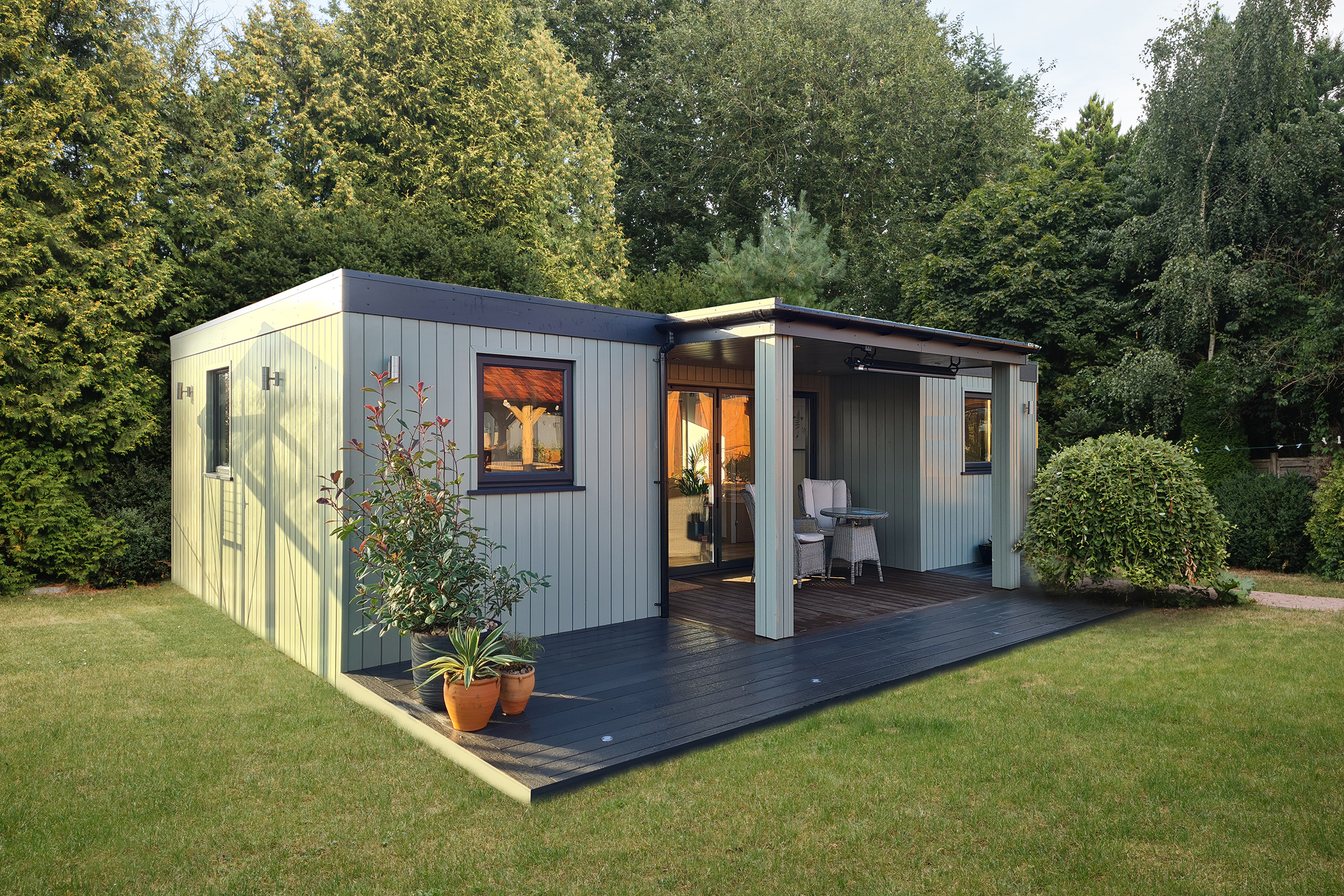Free Info On Planning Permission On Garden Conservatories
Free Info On Planning Permission On Garden Conservatories
Blog Article
What Kind Of Restrictions Do You Have On The Size Of Your Garden, Etc.?
When you're considering the construction of garden rooms or conservatories, outhouses extension or garden offices the size of the space will typically determine if you require planning permission. Here are the size criteria that may require you to obtain planning permission.
For a detached outbuilding planning permission is usually required if the total area of the proposed construction, along with any other outbuildings that are already in place, exceeds 50 percent of the total area of the land around the original house (excluding the footprint of the house itself).
Height Restrictions
Buildings with a single story: The maximum eaves can not exceed 2,5 meters. For roofs that have dual pitches, the height should not exceed 4 meters.
Constructions that are that are within two meters of the property boundary The building's height should not exceed 2.5 meters.
Floor Area:
Even the planning approval isn't needed, structures that have more than 30 square meters could require approval by the building regulations.
Distance from boundaries:
If the structure exceeds 2.5 meters high and lies within 2 metres of a border, planning permission is required.
Building Usage
While not strictly a limitation on size, the planned use of the garden room can impact whether planning permission is required. Planning permission may be required if, for instance the structure is planned to be used for residential or business space.
Permitted Development Rights:
Permitted Development Rights (which allows certain kinds of work to be carried out without the need for full planning applications) are subject to specific size restrictions and restrictions. The rights are based on the location of the property an area of conservation or is under other restrictions.
Conservatories, extensions, and other types of conservatories:
The maximum depth of an one-story rear extension is usually 4 meters in detached homes, and 3 metres in semi-detached homes or terraced houses. These can be extended to 8 and 6 meters, as per the Neighbour Consultation Scheme, subjected to certain conditions.
The maximum height for an extension in the rear that is single story is 4 metres.
Side Extensions
The maximum height for an extension on the side must not exceed 4 meters.
Limitations on volume:
In certain zones (such as Conservation Areas or Areas of Outstanding Natural Beauty), a building addition which increases the dimensions of the initial house by more than ten percent (10 percent) or fifty cubic meters (whichever number is greater) requires planning approval.
Front Extenders
Planning permission is required for extensions that go beyond the front of the house.
It is advisable to make contact with your local planning authority to confirm any rules, as they can differ depending on the local authority and the specific conditions of your home. Even if you don't require planning permission A building regulation approval could still be needed to ensure safety and structural integrity. See the most popular garden room extension costs for more advice including outhouse garden rooms, composite garden office, what size garden room without planning permission, herts garden rooms, garden room planning permission, outhouse uk, gym outhouse, garden rooms, garden room heater, costco garden room and more.
What Planning Permits Are Required For Garden Rooms, Etc. In Terms Of Environmental Impact?
It is crucial to think about the impact on the environment when building garden rooms or conservatories. Take into consideration these important environmental aspects:
If the proposed structure is likely to alter wildlife habitats in your area, such as local hedgerows, trees or ponds, then you'll need permission to plan the project. An ecological study could be required to determine and mitigate the impact on biodiversity.
Protected Species And Habitats
The planning permission is required if the area is home to endangered species (e.g. bats, newts) or is located within or near areas of special scientific significance (e.g. Sites of Special Scientific Interest: SSSI). They need to be protected with special methods.
Tree Preservation Orders
Planning permission may be required if the structure involves the removal or alteration of trees protected by TPOs. Local councils will assess the impact of the proposed structure, and may require that replacement plantings be constructed or any other mitigation measures.
Flood Risk and Water Management
Planning permits are required for development within flood-prone zones. A flood risk assessment (FRA) could be required to ensure that the structure does not create more flood risk and also has drainage solutions that are adequate.
Sustainable Construction Practices
It is possible to obtain planning approval for sustainable construction methods and materials. This includes efficiency in energy use, the carbon footprint of building materials and insulation.
Drainage and Surface Runoff
A key consideration to consider for the environmental is how the new structure will affect drainage and runoff of surface water. Planning permission will ensure that drainage systems to avoid waterlogging and flooding are in place.
Stability of the soil and stability of the land:
This includes potential issues like subsidence or erosion of soil especially in sloped areas. This can include issues such as erosion or subsidence of the soil, particularly on sloped areas.
Air Quality
Planning permission is required for any developments that have the potential to affect the air quality within a local zone, like those close to industrial zones or major roads. This ensures that the air pollution is within acceptable levels, and mitigation methods are implemented.
Noise Pollution:
The planning permission is required when you plan to use the garden extension or room in a manner that is likely to create significant noise (e.g. a music or workshop studio). The local authorities will assess the level of noise to assess the possible negative impact on the nearby residents as well as the surrounding environment.
Waste Management:
A proper waste management is crucial during and following construction. Planning permission assures that there are adequate provisions for waste disposal and recycling to minimize environmental impacts.
Energy Efficiency
Planning permission could include requirements for energy efficiency, like the utilization of solar panels, high-performance glazing, or other green technology. This reduces environmental footprint.
Environmental Regulations Compliance:
Developments have to be compliant with national and local environmental laws, for example the UK Environmental Protection Act. Planning approval ensures that all requirements are met, in addition to the development being environmentally sustainable.
Summary: Planning permission for gardenrooms, conservatories or outhouses as well as garden extensions and offices should be based on a range of environmental effects. To ensure that the development planned is sustainable It is crucial to speak with local authorities for planning prior to the planning phase as is possible. Take a look at the best permitted development garden room size for site recommendations including what size garden room without planning permission, my outhouse, outhouse for garden, what size garden room without planning permission, best heater for log cabin, garden rooms near me, costco outhouse, garden room heater, how to get power to a garden room, Tring garden rooms and more.
What Planning Permissions Do You Need For Garden Rooms Etc In Relation To Agricultural Land?
If you intend to construct an extension, a conservatory, garden office, or an outhouse or extend your land, you will need to apply for planning permission. Here are a few important points:
The land classified as agricultural land is typically used for farming or related activities. Its conversion to residential or to be used for garden structures, typically requires approval from the planning department. This is due to a change in its intended agriculture purpose.
Permitted Development Rights:
Land used for agriculture has typically different rights to development from residential land. In some cases agricultural buildings can be erected with no planning permission. However, these rights, are only applicable to farming structures.
Size and Scale
The proposed dimensions and size of the structure will impact whether planning permission will be required. Planning permission is typically required for large buildings or structures covering a large area.
Impact of Agricultural Use
Planning permission is likely to be required when the proposed structure is incompatible with the agricultural use of the land for example, reducing the space that is available for cropping or livestock.
Green Belt Land:
There are also additional restrictions in place when the land is designated as Green Belt. These restrictions seek to limit the spread of urban sprawl and protect open space. Green Belt land is subject to strict guidelines and planning permission for construction of new structures.
Design and Appearance
The appearance and design of the new structure should be consistent with the rural character of the region. Planning permission ensures that the proposed building does not negatively impact the natural landscape or provide visual appeal.
Environmental Impact:
The impact on the environment is a factor for any development on land that is agricultural. A study of the environment may be required in order to get planning approval to ensure the new structure won't harm wildlife habitats or the local ecosystem.
Closeness to existing buildings:
The proximity of a garden space or office space being proposed to the existing farm facilities could impact plans. The structures near farm buildings may be seen differently from those built on open fields.
Access and Infrastructure
Planning permission will be a test to determine whether the existing infrastructure is capable of supporting the new building. The planning permit will decide if the existing infrastructure can be used to support a new construction.
Use Class Order
The law of planning defines the classes used for agricultural land. In order to comply with local laws, changing the classes of use to include structures other than agricultural typically requires planning approval.
Local Planning Policies:
Local planning authorities formulate specific policies for agriculture land. Local planning authorities have specific policies for land used for agriculture.
National Planning Policy Framework
In the UK the National Planning Policy Framework gives guidelines on how to use and develop land. The NPPF is used to assess the approvals granted to build structures on agricultural land. The framework focuses on the sustainable development of rural areas, protection and conservation.
In the end, planning permission is usually required for the construction of conservatories, garden rooms or outhouses on agricultural land. The need to change the land use and conform to national and local planning policies are the main reasons for this. Consult the local authority for planning for more information on the required requirements and get the approvals you require. Take a look at the most popular cinema garden room for site info including garden out house, outhouses for garden, costco garden room, what size garden room without planning permission, garden rooms near me, how to lay decking on soil, small garden office, composite garden office, garden room planning permission, do i need planning permission for a garden room with toilet and more.